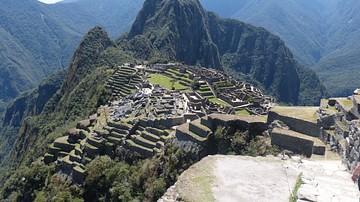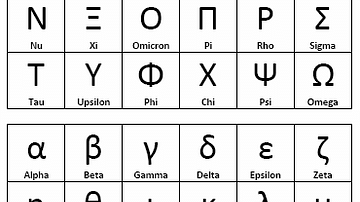Search Images
Browse Content (p. 1579)

Image
Machu Picchu, Peru
The Inca site of Machu Picchu built by Pachacuti Inca Yupanqui (1438-71 CE). Fortress, sanctuary, and once home to around 1,000 residents, the site is perched in the high Andes above the river Urubamba.

Image
Machu Picchu Panorama
The Inca site of Machu Picchu built by Pachacuti Inca Yupanqui (1438-71 CE). Fortress, sanctuary, and once home to around 1,000 residents, the site is perched in the high Andes above the river Urubamba.

Image
Coricancha Curved Wall
Part of the surviving wall from the Inca sacred precinct of Coricancha at Cuzco, 15th century CE. The site was reused for the monastery of Santo Domingo.

Image
Nestor's Cup
Drinking Cup known as the Nestor's Cup found in the ancient Greek site of Pithekoussai on the island of Ischia in Italy, dated to c. 740 BCE. The cup has letters that are considered one of the oldest known examples of the use of the Greek...

Image
Figure 1 - Decline in the number of recorded sites and cemeteries in Greece
Recorded sites and cemeteries in Greece. (a) LH IIIB period , shows a total of 628 sites and cemeteries. (b) LH IIIC period, shows a total of 147, a reduction of slightly over 75% in the number of recorded sites and cemeteries. (Source...

Image
Greek Alphabet
Modern version of the Greek alphabet.

Image
Dipylon oinochoe inscription
The Dipylon oinochoe inscription is a short text carved on an ancient Greek pottery vessel dated to c. 740 BC. It is one of the oldest known examples of the use of the Greek alphabet. The letters are scratched on a wine jug (oinochoe) which...

Image
Statue of Ipi
Striding and standing limestone statue of Ipi. Ipi was a court musician. From Dahshur (Dashur), modern-day Egypt. Old Kingdom, 4th Dynasty, circa 2400 BCE. (State Museum of Egyptian Art, Munich, Germany).

Image
Linear B tablet
A sample of Linear B script. This piece contains information on the distribution of bovine, pig and deer hides to shoe and saddle-makers.

Image
Lefkandi Centaur
Terracotta sculpture found on the site of Lefkandi (Euboea), dated to c. 950 BCE (Archaeological Museum of Eretria).